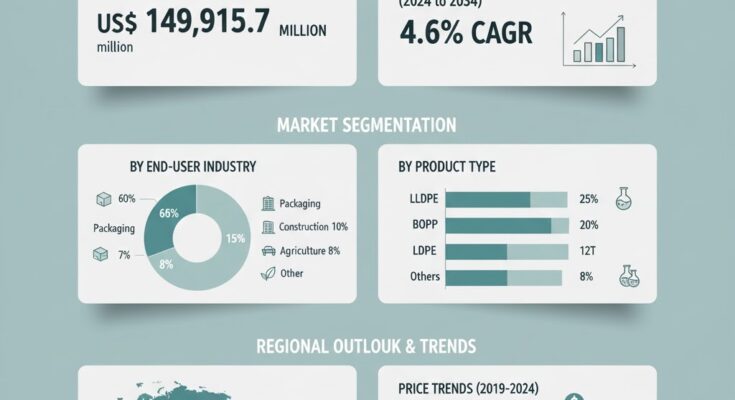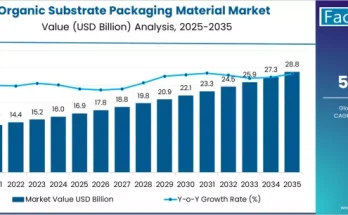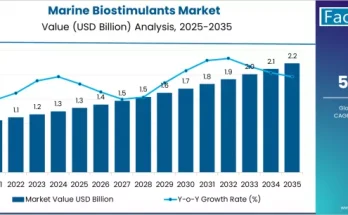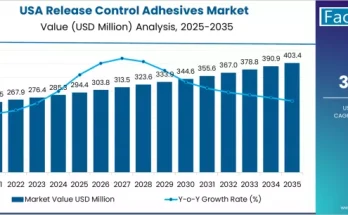The global plastic film market is witnessing accelerated transformation, driven by increasing demand for sustainable packaging solutions, advanced polymer innovations, and versatile industrial applications. According to a recent report by Fact.MR, the market is projected to expand from USD 170.5 billion in 2024 to USD 250.8 billion by 2034, registering a CAGR of 3.9% during the forecast period.
The market’s growth is supported by rapid advancements in flexible packaging, the shift toward lightweight materials, and evolving consumer and regulatory preferences for eco-friendly products. Plastic films are increasingly being used across food packaging, agriculture, construction, medical, and consumer goods sectors due to their superior performance, durability, and adaptability.
Strategic Market Drivers
- Sustainability and Eco-Friendly Material Innovation
Global emphasis on environmental responsibility has accelerated the transition toward biodegradable, compostable, and recyclable films. Manufacturers are increasingly developing sustainable film alternatives that reduce carbon footprints without compromising performance. Regulatory measures like Europe’s Single-Use Plastics Directive and increasing bans on non-recyclable materials are further pushing the industry toward green innovation.
- Expanding Demand in Flexible Packaging
Plastic films are central to the booming flexible packaging industry, which is replacing rigid packaging formats due to convenience, cost efficiency, and shelf-life enhancement. These films provide barrier protection against moisture, oxygen, and contaminants, making them ideal for food, beverages, pharmaceuticals, and personal care products.
- Technological Advancements in Film Manufacturing
Continuous innovation in polymer science and extrusion technologies has enabled the production of thinner, stronger, and multi-functional films. Co-extrusion, nanocomposite layering, and smart film technologies enhance mechanical properties, UV resistance, and recyclability—driving adoption across end-use industries.
- Growth in Industrial and Agricultural Applications
Beyond packaging, plastic films are witnessing rising use in construction (as vapor barriers and insulation membranes) and agriculture (as mulch and greenhouse films). Their ability to regulate temperature, reduce water evaporation, and improve crop yield has made them indispensable in modern farming.
Regional Growth Highlights
East Asia: The Global Manufacturing Hub
East Asia dominates the plastic film market, accounting for more than 40% of global demand. China leads with strong production capacities, expanding exports, and government-backed recycling initiatives. Japan and South Korea continue to advance in specialty films for electronics, automotive, and high-barrier packaging.
North America: Innovation and Circular Economy Leadership
The U.S. and Canada are investing heavily in advanced recycling infrastructure and bio-based plastic film development. Growing collaboration between material science companies and packaging converters supports a robust ecosystem for innovation and sustainable growth.
Europe: Regulation-Driven Transformation
Europe’s commitment to circular economy principles is driving rapid adoption of recyclable and biodegradable films. Countries like Germany, France, and the Netherlands are spearheading initiatives for closed-loop plastic systems, promoting high-performance films made from renewable and recycled materials.
Emerging Markets: Latin America and Middle East & Africa
Emerging economies present substantial growth potential due to rising industrialization, urbanization, and demand for cost-effective packaging. Government incentives for local manufacturing and green packaging development are stimulating regional investments in modern film production facilities.
Market Segmentation Insights
By Material Type
- Polyethylene (PE) remains the most widely used plastic film material due to its versatility and cost efficiency.
- Polypropylene (PP) and Polyethylene Terephthalate (PET) films are gaining traction for their superior clarity and mechanical strength.
- Biodegradable plastics, including polylactic acid (PLA) and PHA-based films, are emerging rapidly as sustainable alternatives.
By Application
- Packaging continues to dominate the market, especially in food, beverages, and healthcare sectors.
- Non-packaging applications—including agriculture, construction, and electrical insulation—are growing steadily as industries prioritize high-performance and long-life materials.
By End-Use Industry
- Food & Beverage leads global consumption, driven by increased processed food demand and convenience packaging.
- Healthcare, personal care, and industrial sectors are witnessing expanding usage due to hygiene and durability requirements.
Challenges and Market Considerations
Despite strong growth prospects, the market faces several challenges:
- Environmental Concerns: Non-biodegradable film waste continues to attract regulatory scrutiny.
- Raw Material Price Volatility: Fluctuating petrochemical prices can impact production costs.
- Recycling Limitations: Technological barriers in recycling multi-layer and composite films persist.
- Competitive Pressure: Continuous innovation is essential to differentiate in a highly fragmented market.
Competitive Landscape
The global plastic film market is moderately consolidated, with major players focusing on innovation, sustainability, and strategic partnerships to strengthen market positions.
Key Companies Profiled:
The Dow Chemical Company; DuPont; Eastman Chemical Company; Evonik Industries AG; Amcor Limited; Berry Plastics Corporation; Griffon Corporation Inc.; Mitsubishi Chemical Holdings Corporation; Honeywell International Inc.; and Saudi Basic Industries Corporation (SABIC).
Companies allocate significant resources to research and development to innovate new materials, improve existing films, and develop eco-friendly alternatives. This includes exploring biodegradable, compostable, and recyclable options while maintaining performance standards. Many players are investing in advanced technologies that reduce environmental impacts and enhance circular economy initiatives.
- The Dow Chemical Company has been a significant player, emphasizing innovation and sustainability. The company invests in R&D for recyclable and compostable films and collaborates on projects that improve performance and reduce environmental impact.
- DuPont leverages its materials science expertise to create high-performance films with enhanced barrier strength, durability, and sustainability, catering to diverse industrial and packaging needs.
Future Outlook: Toward a Sustainable and Circular Plastic Film Industry
The next decade will define the evolution of the plastic film market as industries transition toward circularity, advanced materials, and smart manufacturing. Manufacturers that successfully combine sustainability, technological excellence, and cost efficiency will lead this transformation.
With ongoing advancements in bioplastics, recycling technologies, and energy-efficient production, the plastic film industry is set to play a pivotal role in shaping the future of global packaging and industrial materials—delivering solutions that are smarter, cleaner, and more sustainable than ever before.



